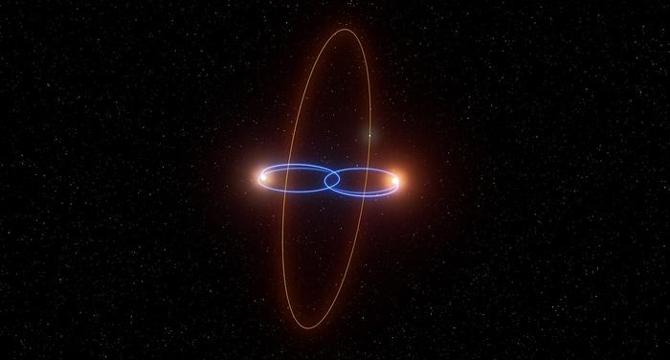Bioengineer
3d
249

Image Credit: Bioengineer
Astronomers Discover Planet Orbiting Perpendicularly Around Binary Star System
- Astronomers have discovered an exoplanet, 2M1510 (AB) b, in a unique polar orbit around a pair of brown dwarfs, challenging previous ideas of planetary orbits in multi-stellar systems.
- This polar circumbinary planet is nearly perpendicular to the orbital plane of its host brown dwarfs and was detected using the European Southern Observatory’s Very Large Telescope (VLT).
- The discovery sheds light on the stability and formation of planets in complex gravitational environments and suggests revisions in models of protoplanetary disc evolution and planet migration dynamics within binary systems.
- The planet's presence in a polar orbit around the binary system provides a unique opportunity to study celestial mechanics under exotic conditions and refine our understanding of exoplanetary systems.
- Amaury Triaud from the University of Birmingham emphasized the rarity and significance of this discovery, highlighting the importance of continued monitoring of eclipsing binaries.
- The discovery emphasizes the transformative power of advanced astronomical instrumentation, such as the UVES spectrograph, in unraveling celestial mysteries with precision.
- The system also includes a third distant stellar companion, ruling out its gravitational effects as the cause of the planet's peculiar orbit.
- The study, published in Science Advances, challenges existing paradigms and opens new pathways for identifying and characterizing polar orbit planets in various stellar systems.
- This groundbreaking finding showcases the vast diversity of planetary configurations in the universe, hinting at more surprises awaiting discovery.
- The discovery of 2M1510 (AB) b represents a significant milestone in observational astrophysics and showcases the unforeseen discoveries that can emerge from serendipitous observations.
Read Full Article
15 Likes
For uninterrupted reading, download the app